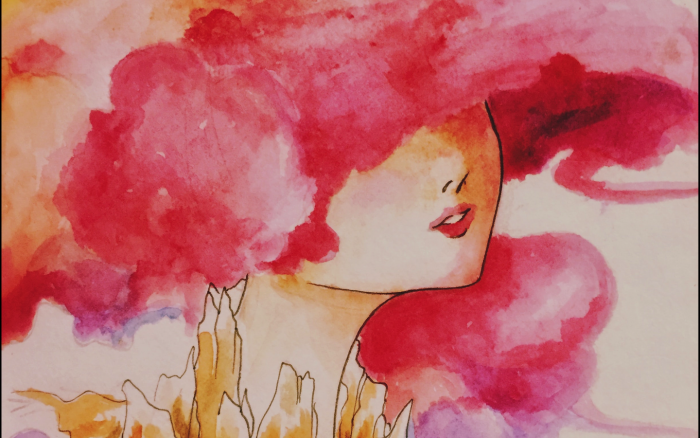“Something’s wrong with me.”
I’ve said this to myself more times than I can count throughout my life. It started when I was in high school; I would stare at a science textbook for who knows how long, not absorbing any of the words but going home to devour a novel.
Or maybe it started in middle school when I could recall the latest episode of “Smallville” verbatim, but I could not remember what I’d worn to school the day before.
Maybe it started in elementary school when I’d put off projects until the evening before they were due, blaze through two weeks of work in 10 hours, and ride the high of my presumed superpower.
But I wasn’t a superhero. I was a kid with undiagnosed ADHD. When, at the age of 26, I finally did get a diagnosis, I felt relief. I’d known this all along. But because I had no diagnosis (and therefore no support) prior to this, I carried a lot of shame about the way my mind worked.
The anxiety that was a byproduct of my ADHD made it so that I went to great lengths to hide just how scattered and disorganized I was. I’d always been a great student if I found the subject interesting, and since my hyperactivity wasn’t quite obvious, I was a star pupil.
~
Best way to to keep your core pelvic and org@sm muscles strong and resilient? Here’s the coveted apparatus that makes this possible >>
~
But the older I got, and the more responsibility I had to take for my own life, the worse my ADHD symptoms became. In my 20s, I went from reading an average of a book a day to maybe one a year. I’d pick up new hobbies, get distracted, remember them in a few months, punish myself for the time I’d wasted, rinse, repeat. I was messed up. Something was seriously wrong with me.
Holding on to any type of focus felt like trying to hold handfuls of sand. Any sense of direction was slipping through my fingers. And when medication was clearly not a good fit, and my therapist suggested meditation, I dismissed the idea on those same grounds. Meditation was for “normal” people. People who could focus. People who were organized. People whose minds actually stopped racing long enough for them to think. Or to not think.
I couldn’t do that. I couldn’t sit still for 10 minutes, let alone an hour. And believe me, I was curious, so I did try. And I failed. I failed for years. I could chant and still fantasize about what I’d be having for dinner later. I could practice “breathe deeply” while scrolling on social media. It was pointless to even try. So, I stopped trying. Then one day, when I searched meditations on YouTube, I found one-minute meditations. I thought, “I can do that!”
“Anyone can do something for 60 seconds!”
So, I did. And it was so easy and (dare I say it) fun that I did it a couple more times that day. And I did it again every day that week! I was proud of myself, not just because I was officially a person who meditates, but because I was sticking to this new routine. I had hope again! Hope that I could become calmer, more centered, mindful, and all the other stuff that super-zen people rave about.
Six years and some touch-and-go later, I am still a person who meditates. I’ve branched out to 5, 10, and even 30-minute meditations. I’ve tried transcendental meditation, the Silva Method, the Wim Hof breathing technique, and guided meditations. (What can I say? I get bored easily!)
I find something of value in every meditation practice. I stopped thinking of meditation as something I should do and started seeing it as a mental getaway. Each time I give myself the mental retreat of mediation, I win a small victory against anxiety and spark some truly insightful inner conversations which help me get to know myself better.
I meditate not because there’s something wrong with me but because I deserve this rest—this reset.
And it all started with 60 seconds.
Ready to join?
Hey, thanks so much for reading! Elephant offers 1 article every month for free.
If you want more, grab a subscription for unlimited reads for $5/year (normally, it's $108/year, and the discount ends soon).
And clearly you appreciate mindfulness with a sense of humor and integrity! Why not join the Elephant community, become an Elephriend?
Your investment will help Elephant Journal invest in our editors and writers who promote your values to create the change you want to see in your world!
Already have an account? Log in.
Ready to join?
Hey, thanks so much for reading! Elephant offers 1 article every month for free.
If you want more, grab a subscription for unlimited reads for $5/year (normally, it's $108/year, and the discount ends soon).
And clearly you appreciate mindfulness with a sense of humor and integrity! Why not join the Elephant community, become an Elephriend?
Your investment will help Elephant Journal invest in our editors and writers who promote your values to create the change you want to see in your world!
Already have an account? Log in.
Ready to join?
Hey, thanks so much for reading! Elephant offers 1 article every month for free.
If you want more, grab a subscription for unlimited reads for $5/year (normally, it's $108/year, and the discount ends soon).
And clearly you appreciate mindfulness with a sense of humor and integrity! Why not join the Elephant community, become an Elephriend?
Your investment will help Elephant Journal invest in our editors and writers who promote your values to create the change you want to see in your world!
Already have an account? Log in.

 Share on bsky
Share on bsky







Read 4 comments and reply